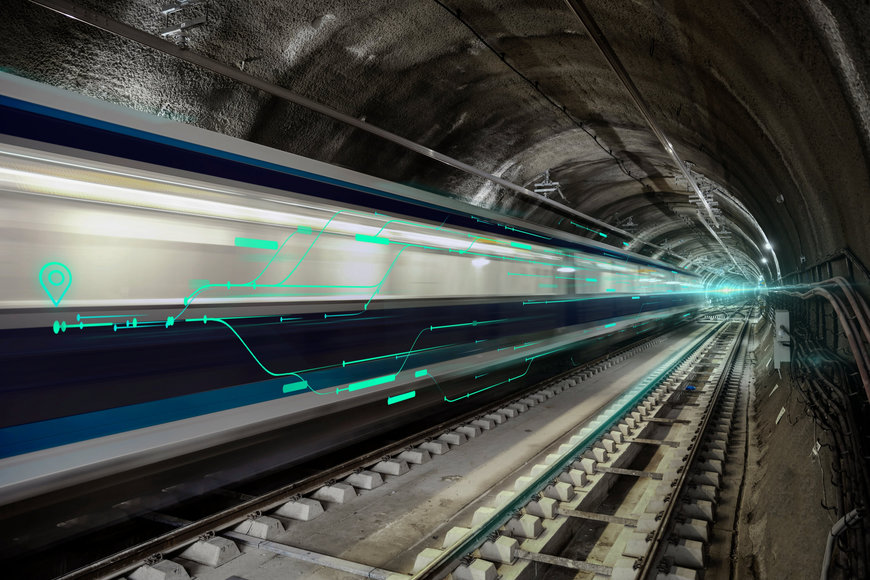railway-international.com
14
'22
Written on Modified on
Additional capacity for Hamburger Hochbahn’s U2 and U4 lines
Hamburger Hochbahn and Siemens Mobility are building the train control system of tomorrow for Hamburg’s U2 and U4 lines.

Between now and 2030, a state-of-the-art digital train control system from Siemens Mobility will be installed as an upgrade to the conventional train control system used by operator Hamburger Hochbahn (HOCHBAHN) on its U2 and U4 subway lines. The new technology, known as CBTC (communication-based train control), will allow trains to run at shorter intervals of only 100 seconds, which will put significantly more trains on the track in the future, thereby increasing capacity. In addition, CBTC also improves punctuality, reliability, and energy consumption.
Henrik Falk, CEO of HOCHBAHN, commented: “For the mobility transition, we need powerful and reliable systems that create real customer benefits. Through the U-Bahn100 project, we’re creating a service for our passengers that is simply unbeatable: a subway train every 100 seconds – on time, reliable, environmentally friendly, and effectively available at all times.”
“This project is an important milestone on the road to transforming mobility in Hamburg. In the future, trains on the U2 and U4 lines will be able to run every 100 seconds,” said Andre Rodenbeck, CEO for Rail Infrastructure at Siemens Mobility. “Siemens and Hamburger Hochbahn have a long history together, and we’re extremely proud to be able to implement our innovation here in Hamburg. Our technology combines greater track capacity, maximum availability, and lower energy requirements with the highest possible level of safety.”
What is being upgraded?
Siemens Mobility will supply and install its digital Trainguard MT CBTC solution for the conventional Sicas ECC interlockings currently in service on the two subway lines. In addition, the company is also supplying the relevant technology that needs to be installed in the subway cars. Trainguard MT will then be available on the U2 line between the Christuskirche and Mümmelmannsberg stations and on the entire U4 line. Siemens Mobility’s Trainguard MT is the most widely deployed train control system in the world. It is used by numerous operators around the globe, including in Paris, Beijing, New York, London, Hong Kong, and Buenos Aires.
What is communication-based train control?
Communication-based train control, or CBTC, for short, refers to a complex system of digital signals and messages that vehicles and the line itself permanently exchange with each other in real time. Various components along the line and in the vehicles make this radio-based, bidirectional data communication between the train and the infrastructure possible, in which track information is wirelessly transmitted to the trains.
What are the benefits of digital train control?
Digital train control increases the capacity of the subway lines, especially in tunnels. The key aspect driving such modernization is ultimately the expansion of services – i.e., more trains on the track and at shorter intervals, both of which play an essential role in the transformation of the mobility system, including the switch from cars to public transportation. This is because a CBTC system allows rail vehicles to operate at actual braking distance intervals rather than on the basis of predefined block section lengths, as has previously been the case. This will enable shorter train sequences, increasing transport capacity by more than 20 percent – without the need for expensive track and tunnel widening or the construction of completely new tracks altogether.
The state-of-the-art, high-performance train control technology doesn’t just allow more trains to use the track, however, but also enhances the accuracy and reliability of the schedule. Furthermore, it makes subway operation more energy-efficient – with savings of up to 20 percent possible – and improves passenger comfort through smoother acceleration and braking.
All in all, communication-based train control will increase the capacity and overall attractiveness of the subway system, thereby increasing rail-based public transit’s total share of urban transport. This, in turn, will directly contribute to a reduction in harmful exhaust emissions, thereby improving the city’s air quality.
www.mobility.siemens.com

